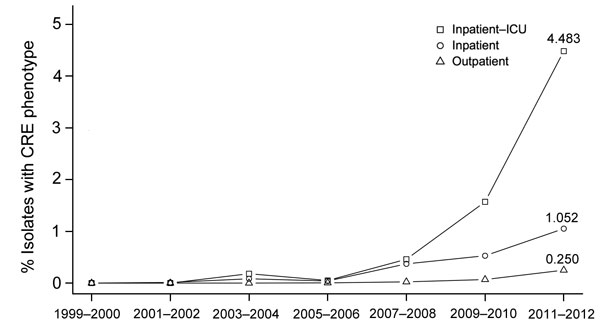Volume 21, Number 11—November 2015
Research
Carbapenem-Resistant Enterobacteriaceae in Children, United States, 1999–2012
Figure 2

Figure 2. Prevalence of carbapenem-resistant Enterobacteriaceae (CRE) isolates from children by health care setting, The Surveillance Network-USA database, 1999–2012. Health care setting was determined by patient location at the time a microbiological sample was collected. Data for patients <1 year of age were not available for all years and were excluded from this analysis. There was a significant positive quadratic trend for intensive care unit (ICU) (p = 1.1 × 10−18), outpatient (p = 8.6 × 10−26), and inpatient non-ICU (p = 5.0 × 10−11). There was no significant trend for the nursing home setting, which made up 0.34% of total isolates (Table 1).
Page created: October 29, 2015
Page updated: October 29, 2015
Page reviewed: October 29, 2015
The conclusions, findings, and opinions expressed by authors contributing to this journal do not necessarily reflect the official position of the U.S. Department of Health and Human Services, the Public Health Service, the Centers for Disease Control and Prevention, or the authors' affiliated institutions. Use of trade names is for identification only and does not imply endorsement by any of the groups named above.